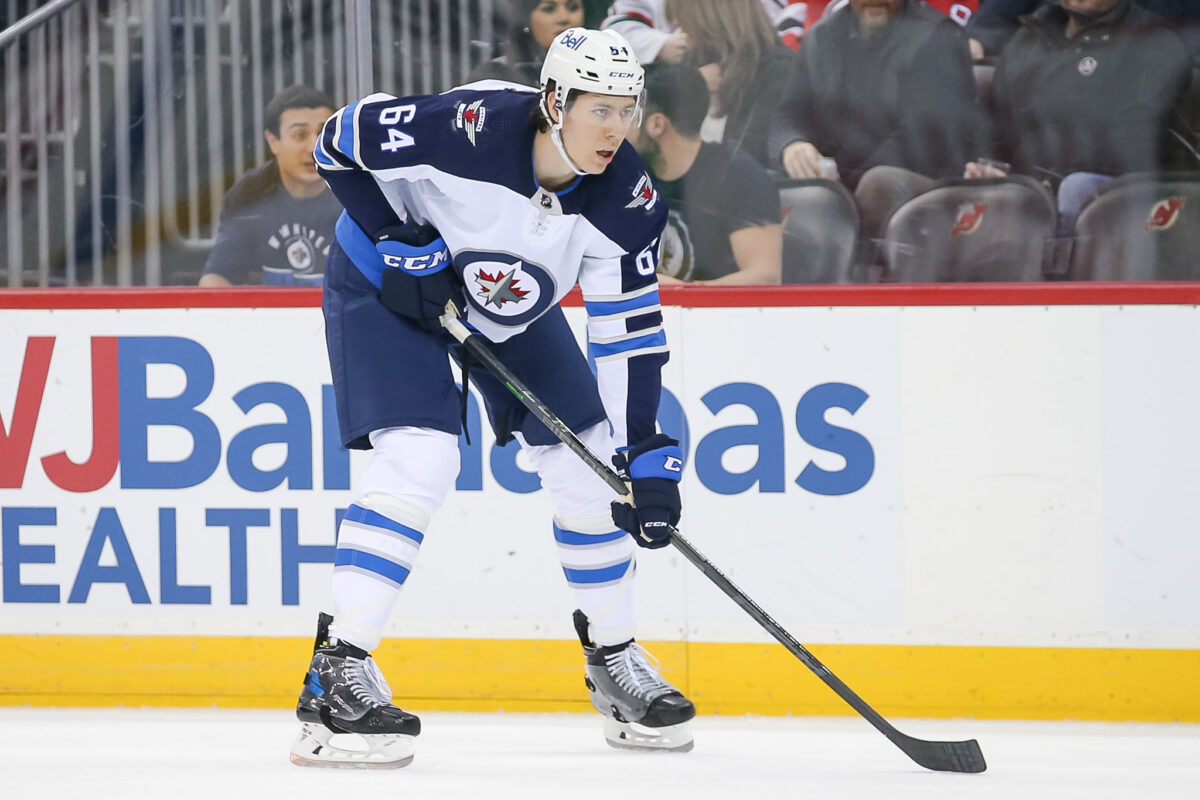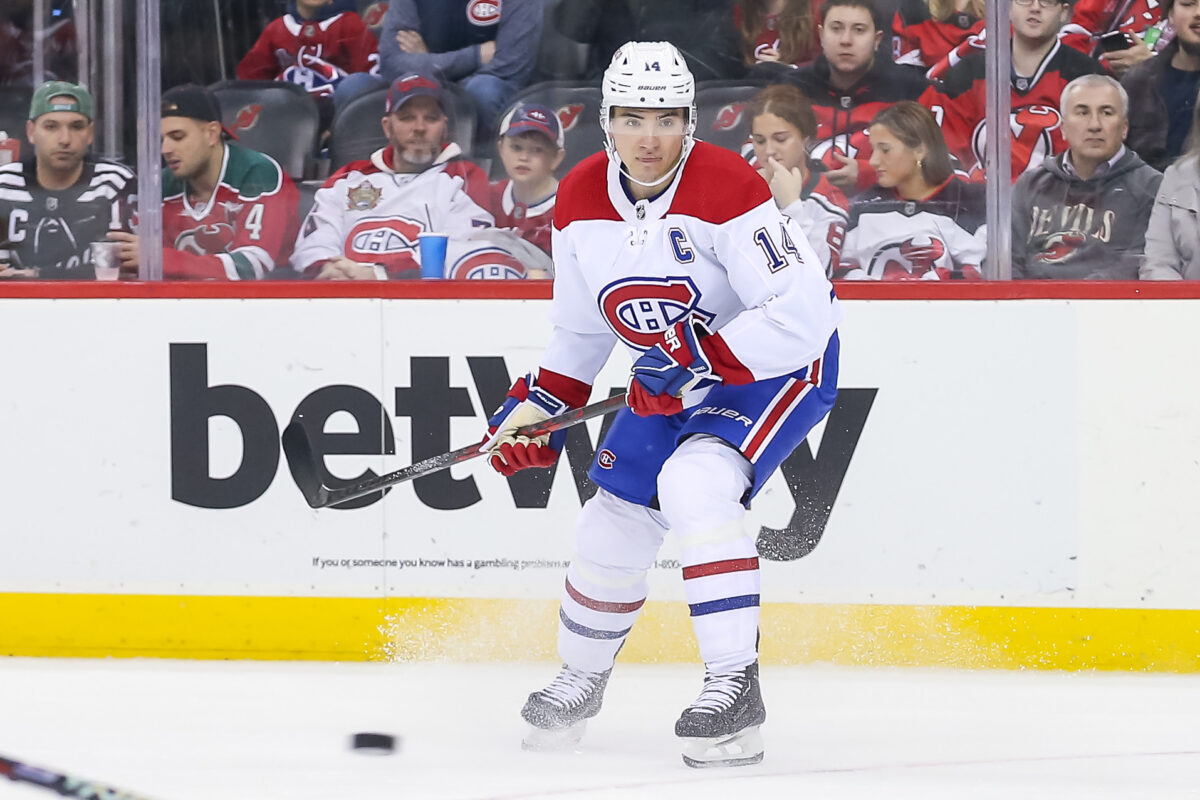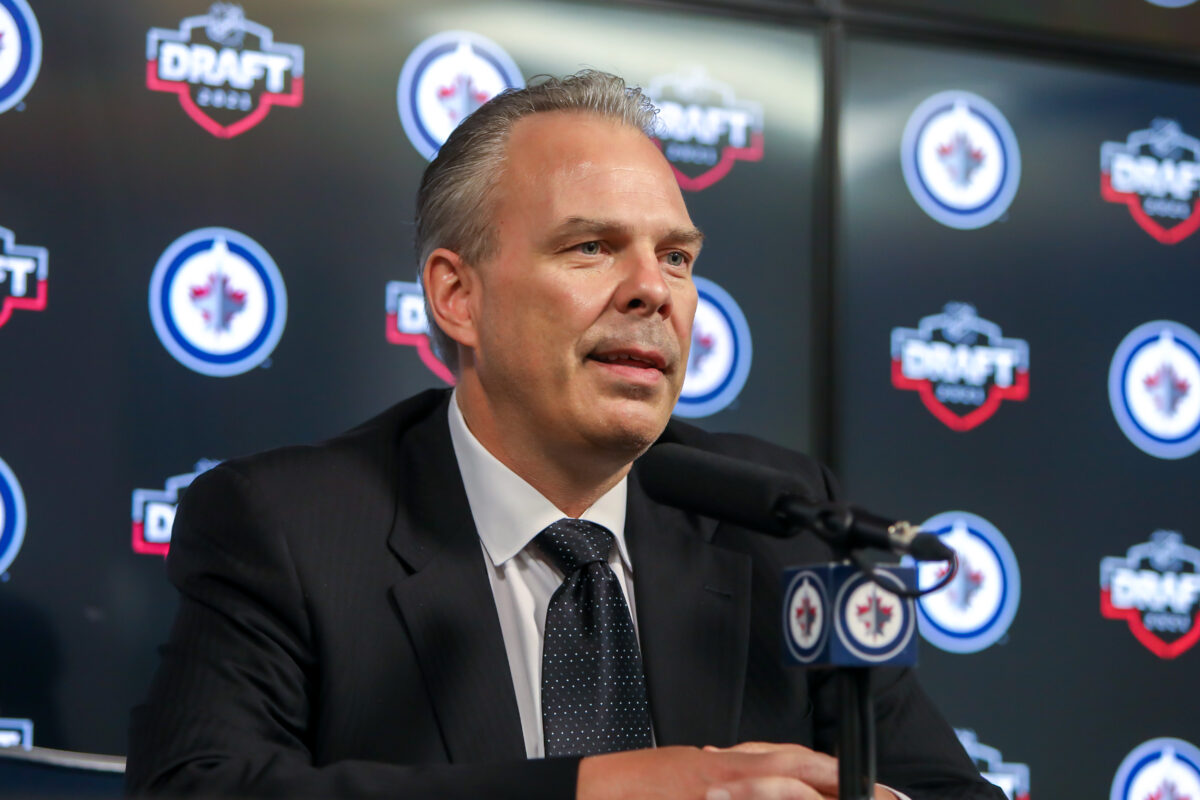The Winnipeg Jets organization and general manager Kevin Cheveldayoff treat their future first-round draft picks like gold, things that have inherent value and are to be protected fiercely; things to be dealt away only when the return is high or when assets now outweigh potential assets later.
Cheveldayoff, on Friday, Feb. 2, traded one of those picks, sending his first-rounder in the upcoming 2024 NHL Entry Draft to the Montreal Canadiens (along with a conditional third-round 2027 pick) in exchange for centre Sean Monahan.
Cheveldayoff does not have a long record of trading away first-round picks, preferring instead to use them to build the core of his team. In his 12 seasons as GM, he has made 15 first-round selections and prior to the Monahan trade, dealt a first-rounder only four times. Him doing so should speak loudly to the team about his faith in them, but also his expectations.
Cheveldayoff’s (Fairly Short) History of Trading First-Round Picks
The first two times Cheveldayoff traded a first-rounder, he traded it for a different first rounder. In 2016, he traded the 22nd-overall pick and 36th-overall picks to Philadelphia Flyers to upgrade to the 18th-overall pick (he also got a 79th-overall pick.)
With that 18th-overall pick, he chose Logan Stanley, who hasn’t worked out and in retrospect wasn’t worth trading up for. The Flyers took German Rubtsov with the 22nd-overall pick, and he only played four NHL games before heading to the KHL.

A year later, ahead of the 2017 NHL Entry Draft and Expansion Draft that would fill out the Vegas Golden Knights’ roster, Cheveldayoff traded his 13th-overall pick and the 82nd-overall pick to the Golden Knights for the 24th-overall pick. Trading the Golden Knights the higher first-rounder was a strategic quid-pro-quo to get Golden Knights’ GM Kelly McCrimmon to agree not to select Marko Dano in that Expansion Draft (McCrimmon lived up to his end of the deal, choosing Chris Thorburn instead.)
With the 13th-overall pick, the Golden Knights selected Nick Suzuki, but they traded him in 2018 to the Canadiens for Max Pacioretty. With the 24th-overall pick, the Jets selected Kristian Vesalainen.

Oh what could have been for the Jets. Suzuki is now the captain of the Canadiens and has more than 250-career points in five seasons, while Dano didn’t work out, playing just 23 more games for the Jets and recording three points. Vesalainen was a bust, recording just five points in 70 games before returning to Finland.
Related: Jets & Former 1st-Rounder Vesalainen Part Ways After Lacklustre Tenure
The first time Cheveldayoff traded away a first-rounder and did not receive another one was near the 2018 Trade Deadline, when he sent Erik Foley and a 2018 first-rounder to the St. Louis Blues for Paul Stastny.
This worked out tremendously for the Jets and was a clear signal from Cheveldayoff to his team that he believed they were finally a true Stanley Cup contender. Stastny fit right in between Nikolaj Ehlers and Patrik Laine, recording 13 points in 19 games down the stretch and 15 points in 17 playoff games during the Jets’ run to the Western Conference Final.
Although Stastny signed with the Golden Knights in the 2018 offseason, the trade established a relationship with the veteran that proved beneficial when they reacquired him via trade ahead of the 2020-21 season and re-signed him for 2021-22. Stastny recorded 74 further points in 126 games and acted as a stable influence to young players; he will always be a player whose impact on the franchise outweighed the time he spent with it.

The Blues traded the Jets’ 2018 first-rounder — which ended up being the 29th-overall pick — to the Toronto Maple Leafs for the 25th-overall pick. With the 25th-overall pick, the Blues selected Dominic Bokk, who never reached the NHL and now plays in Germany. With the 29th-overall pick, the Leafs selected Rasmus Sandin, who now plays for the Washington Capitals.
The last time, before now, that Cheveldayoff traded a first-rounder was at the 2019 NHL Trade Deadline, when he traded his first-rounder to the New York Rangers for centre Kevin Hayes. The Jets were going through locker-room turmoil and the time and probably shouldn’t have been buyers at all; the Hayes addition did nothing to fix the “ruffled feathers” and oversized egos that were the main cause of their struggles. Hayes was certainly no Stastny, but did have 12 points in 20 games down the stretch and three points in six playoffs games, but the Jets bowed out in the first round to the eventual-Stanley-Cup-Champion Blues.
Cheveldayoff avoided this trade being a disaster — especially since he only got a fifth-rounder from the Flyers for Hayes after the season was over — as the pick he traded for Hayes came back to him as part of the return in the June trade that sent defenseman Jacob Trouba to the Big Apple. With the pick, which turned out to be 20th overall, Cheveldayoff selected Ville Heinola.
Trading 2024 First-Rounder Indicates Jets Are in Win-Now Mode
By dealing a potential future asset for a present-day one, Cheveldayoff has sent the message that he believes his team — which at one point in January was sitting on top of not just the Central Division but the entire NHL and is still in a good spot — is in win-now mode.
Monahan, a 29 year old who can play all three forward positions but primarily plays centre, will greatly boost the team’s depth up the middle — an area that was exposed as a bit shallow after Mark Scheifele was injured and missed the past six games prior to the All-Star Break. The Jets went 2-3-1 in those games without the top centre; Adam Lowry, Vladislav Namestnikov, and Dominic Toninato all jumped up to the top six and worked hard, but Monahan is an obvious upgrade over all of them and will likely slot on the second line between Ehlers and Cole Perfetti. The timing of the trade — more than a month ahead of the March 8 trade deadline — will give them more time to build chemistry.
Related: Jets’ Top Three Performers From January
Monahan, a sixth-overall 2013 pick of the Calgary Flames, has 13 goals and 22 assists for 35 points this season. In 656-career games between the Flames and Canadiens, has 212 goals and 250 assists for 462 points. He also has 10 goals and 11 assists for 21 points in 30 playoff games.
The Jets stand to benefit from Monahan’s play not only at five on five — where the team has already been strong all season — but also on the power play and in the faceoff circle. The Jets have struggled in both those facets of the game, with their power play operating at just a 15.45 per cent efficiency to sit 24th in the league and their centres only winning 46.7 per cent of their faceoffs to sit 27th in the league. Monahan has 16 power-play points this season (six goals, 10 assists) and is a strong net-front presence; he has won 55 per cent of his draws.
“When we set out to look for something, we first and foremost wanted to feel like it was a fit with how we want to play, who we are from a character standpoint. He checks those boxes,” Cheveldayoff said in media Zoom call Friday afternoon.

“He’s a mature, professional player that has learned his craft and become a top player over the course of time in the National Hockey League,” Cheveldayoff continued, also praising the way Monahan interacted with and mentored young players with the Canadiens.
There’s always an argument of which way is the best way for a GM to “reward” his team when they look like contenders. Some claim the best way to reward a team is to add someone who can help their chances of going deep in the playoffs, while others argue the best way to reward a team is to keep letting the players who got them this far stay in their current roles. In this case, Cheveldayoff chose the latter, partly due to the team’s recent stumble.
Only time will tell whether Monahan, a pending unrestricted free agent, is just a rental or if he’ll re-sign in the offseason. The salary cap is slated to go up significantly for next season to approximately $87.675 million, potentially opening the door to his return.
Time will also tell if the addition turns out like the Stastny one or the Hayes one, but one thing is clear: Cheveldayoff saw a need and addressed it by parting with an asset he values highly and rarely lets go of.
“When you’re in situations like this, and I’ve been on both sides of them, you grind away to not have to trade it — and you grind away to make sure you make the other team give it up,” Cheveldayoff said about moving his pick. “You have to weigh the alternatives, weigh the fit. When the fit is great and you believe this is the best option for you, you have to make those tough calls.”